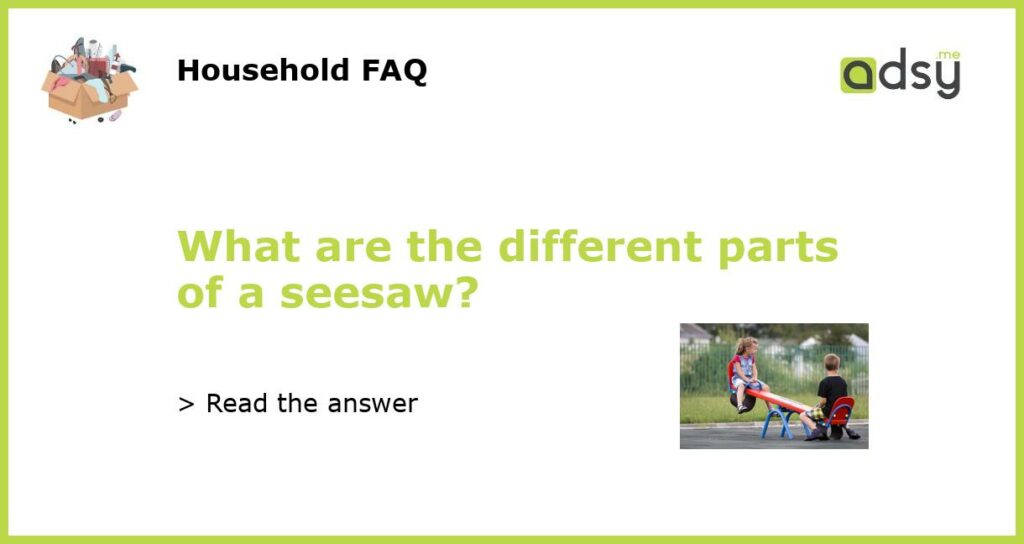The Board
The first and most obvious part of a seesaw is the board. This is the long, flat piece of wood, metal, or plastic that provides the seating area for the riders. The board is typically curved in shape to allow for easy rocking motion.
The Pivot Point
The pivot point, also known as the fulcrum, is the point at which the board is balanced and able to move up and down. It is usually located in the center of the board and serves as the axis around which the seesaw rotates. The pivot point needs to be sturdy and well-anchored to ensure the stability and safety of the riders.
Handles or Bars
To provide support and stability while riding the seesaw, many designs include handles or bars for the riders to hold onto. These handles are typically located on either side of the seating area and allow the riders to grip and balance themselves as the seesaw moves. The handles can be made of metal, plastic, or other sturdy materials.
Supporting Structures
Seesaws are often supported by additional structures to ensure their stability. These supporting structures can vary in design and materials depending on the specific seesaw. They may include metal or wooden frames, concrete footings, or other types of anchoring mechanisms. The supporting structures are essential for preventing the seesaw from tipping over or collapsing during use.
Safety Features
Lastly, many modern seesaws feature safety elements to protect the riders from injury. These safety features can include non-slip surfaces on the board and handles, rounded edges to prevent cuts or scrapes, and shock-absorbing materials to cushion the impact of the seesaw’s movement. Additionally, some seesaws may have weight restrictions or height limitations to ensure safe usage. It is important to follow these guidelines to prevent accidents.






